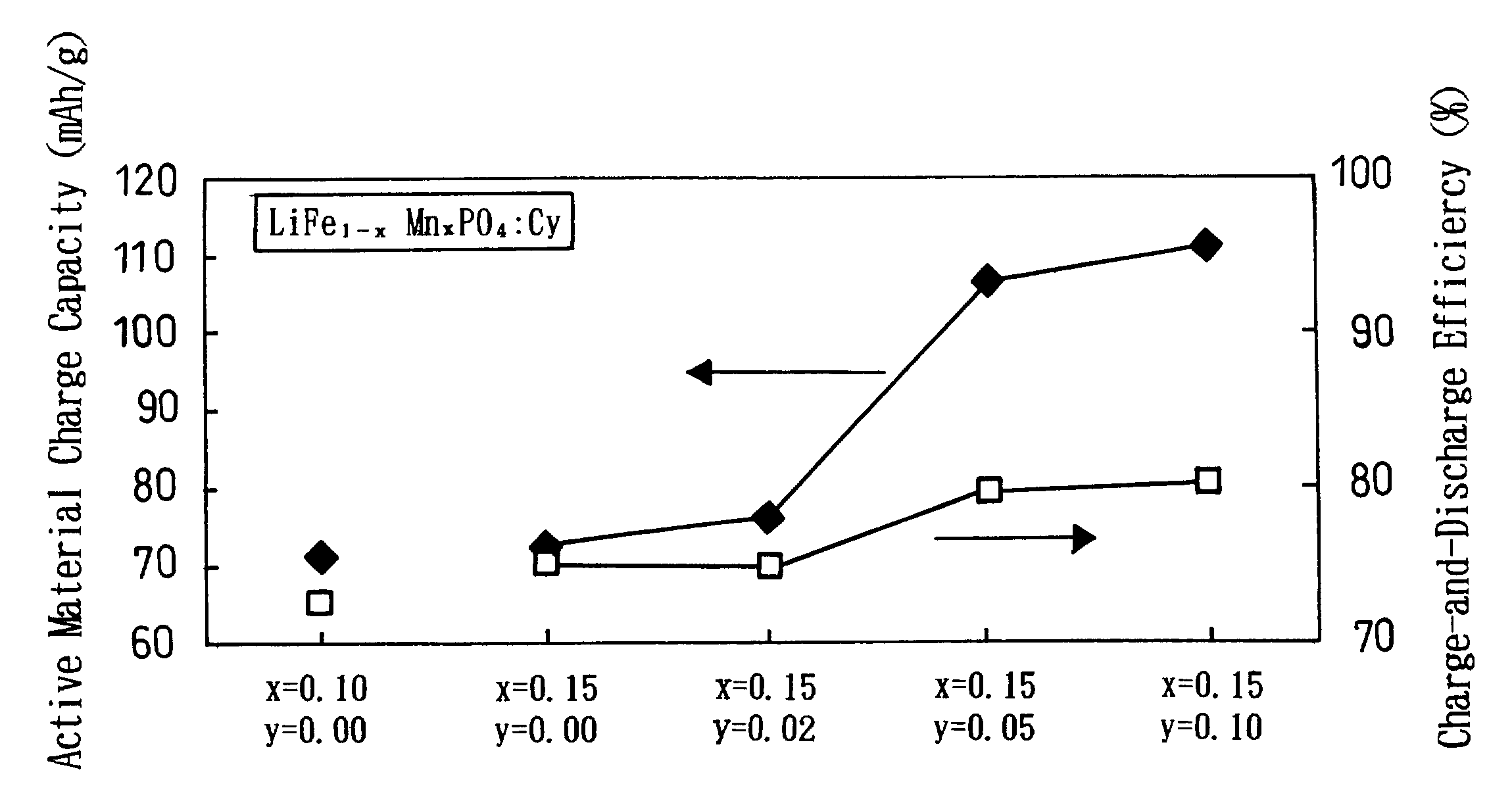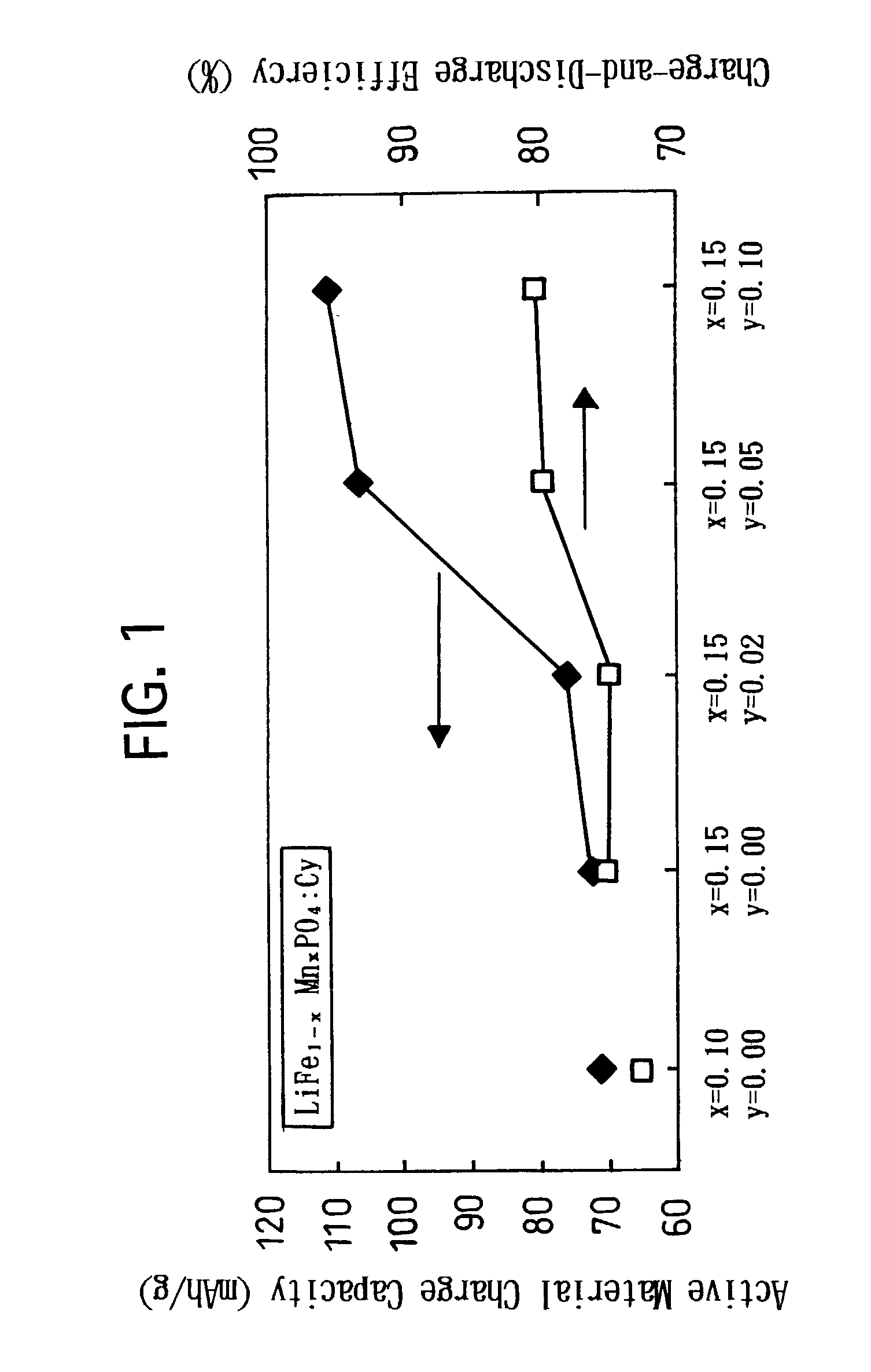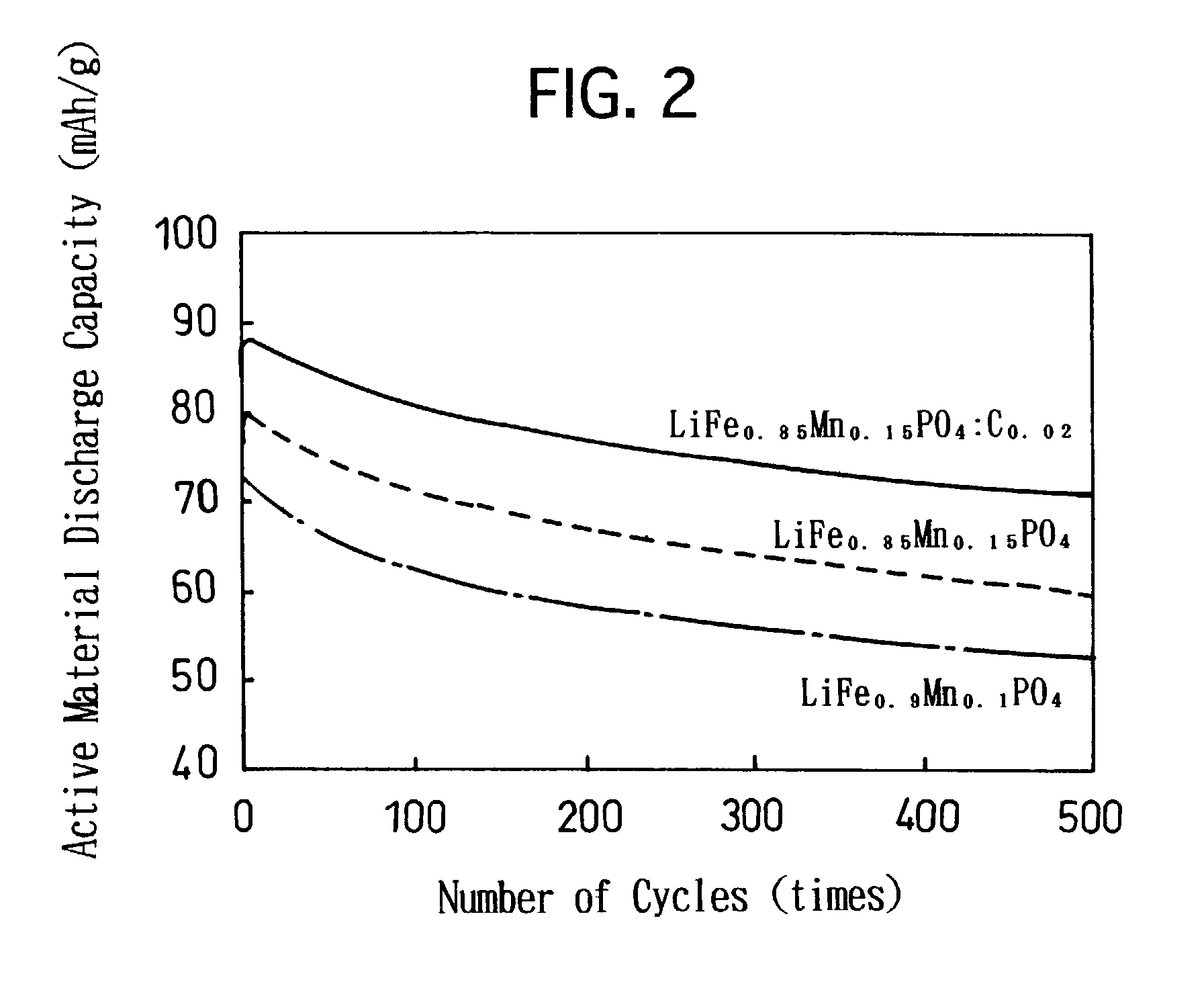Carbon-containing lithium-iron composite phosphorus oxide for lithium secondary battery positive electrode active material and process for producing the same
a lithium secondary battery and active material technology, applied in the direction of non-metal conductors, cell components, conductors, etc., can solve the problems which use licoosub>2/sub> as the positive electrode active material, are less likely to cope with the future, and are not likely to obtain a sufficient capacity of lithium secondary batteries, etc., to achieve the effect of reducing the diffusion distance of lithium ions, enhancing the capacity of the resultant lithium
- Summary
- Abstract
- Description
- Claims
- Application Information
AI Technical Summary
Benefits of technology
Problems solved by technology
Method used
Image
Examples
examples
[0055]In accordance with the above-described embodiment mode, a variety of the carbon-containing lithium-iron composite phosphorus oxides were produced in which the proportion of the contents of the carbon atoms were different with each other. Then, lithium secondary batteries were manufactured in which a diversity of the thus produced carbon-containing lithium-iron composite phosphorus oxides were used as the positive electrode active materials. The resultant lithium secondary batteries were graded for the battery characteristics by measuring the active material charge-and-discharge capacity. Note that the “active material charge-and-discharge capacity” herein implies the charge-and-discharge capacity exhibited by a unit weight of the positive electrode active materials from which the weight of the carbonaceous fine particles is subtracted. Hereinafter, the specific examples will be described in detail.
Production of Carbon-Containing Lithium-Iron Composite Phosphorus Oxides
[0056]A ...
PUM
 Login to View More
Login to View More Abstract
Description
Claims
Application Information
 Login to View More
Login to View More - R&D
- Intellectual Property
- Life Sciences
- Materials
- Tech Scout
- Unparalleled Data Quality
- Higher Quality Content
- 60% Fewer Hallucinations
Browse by: Latest US Patents, China's latest patents, Technical Efficacy Thesaurus, Application Domain, Technology Topic, Popular Technical Reports.
© 2025 PatSnap. All rights reserved.Legal|Privacy policy|Modern Slavery Act Transparency Statement|Sitemap|About US| Contact US: help@patsnap.com



